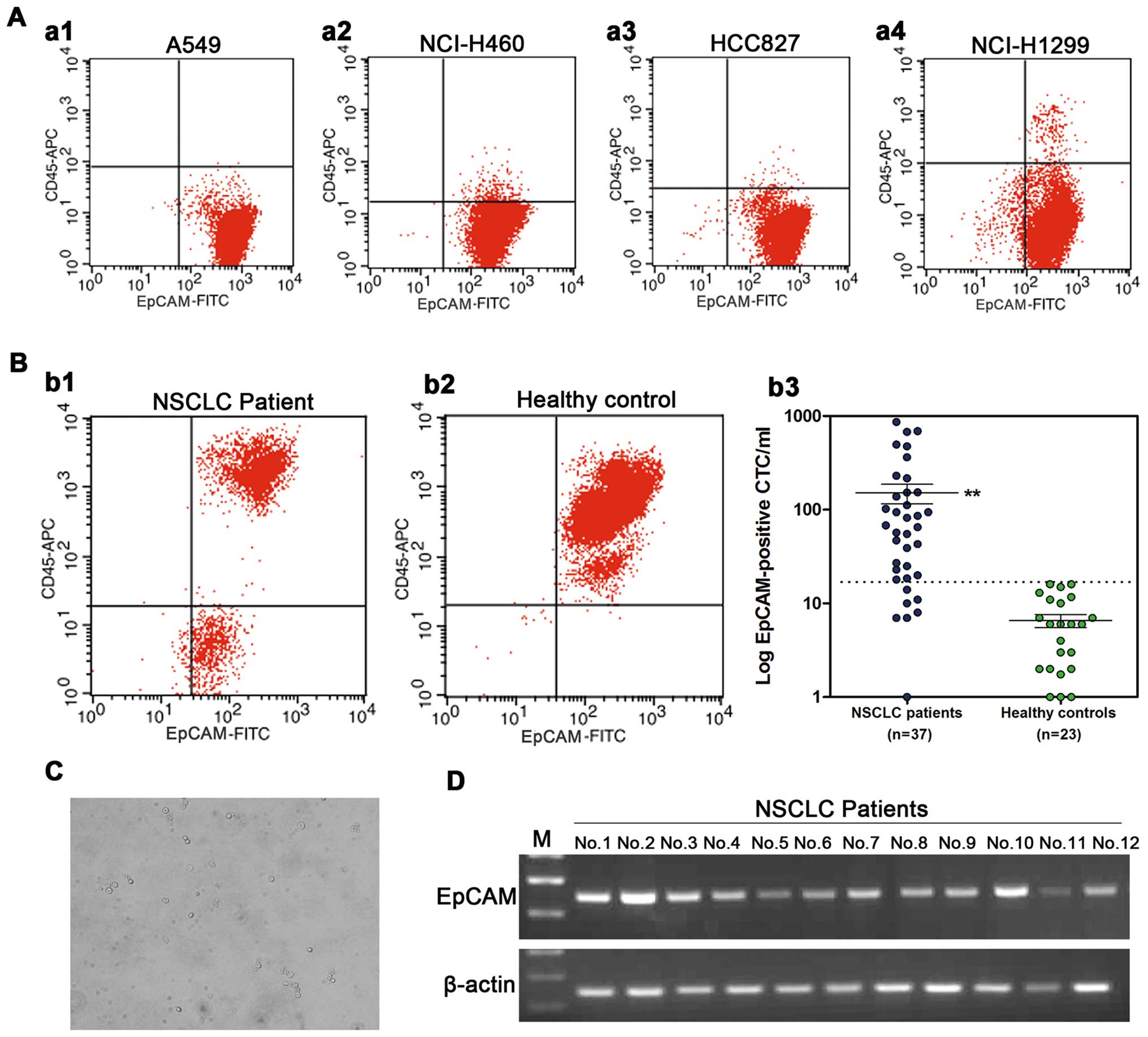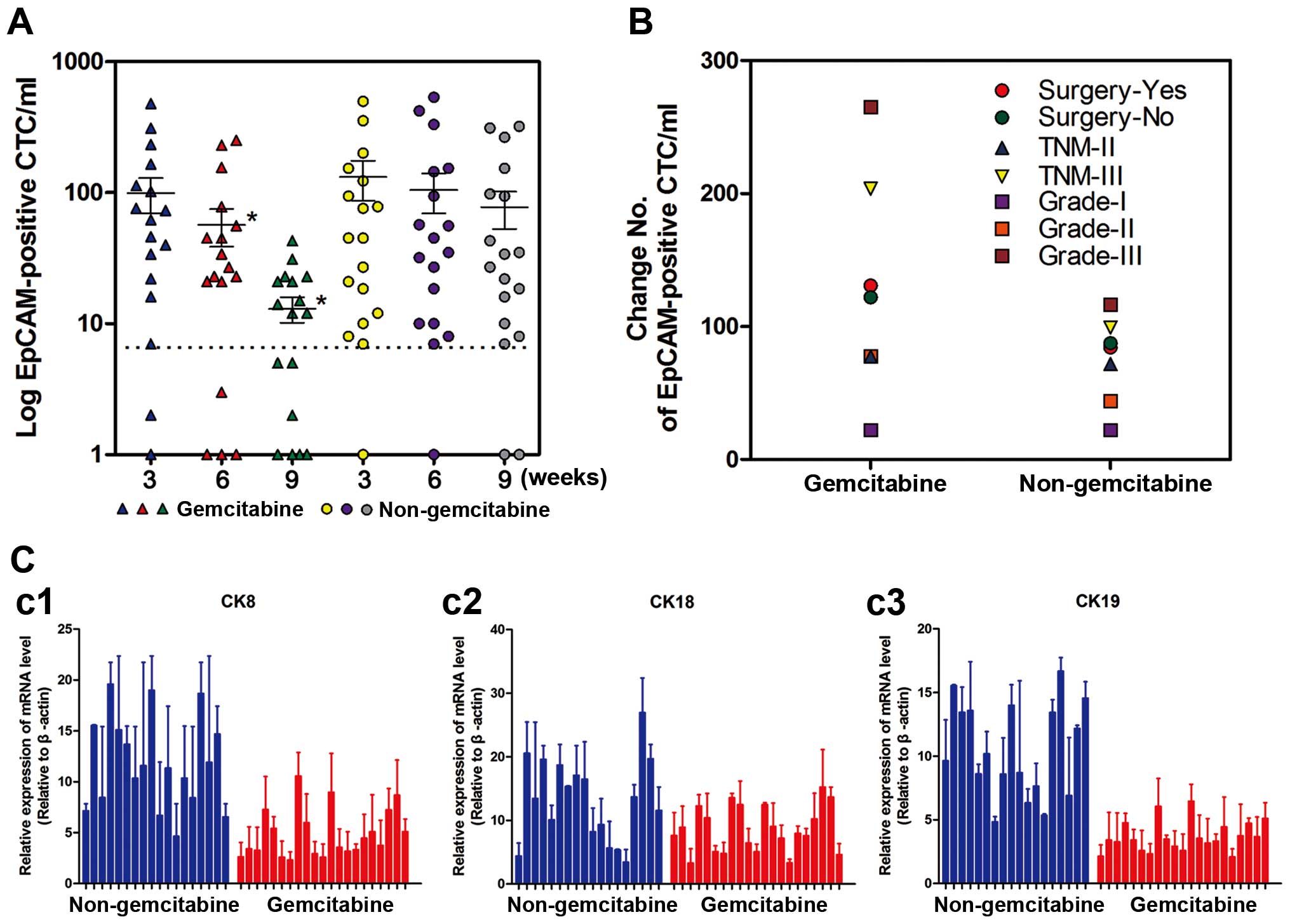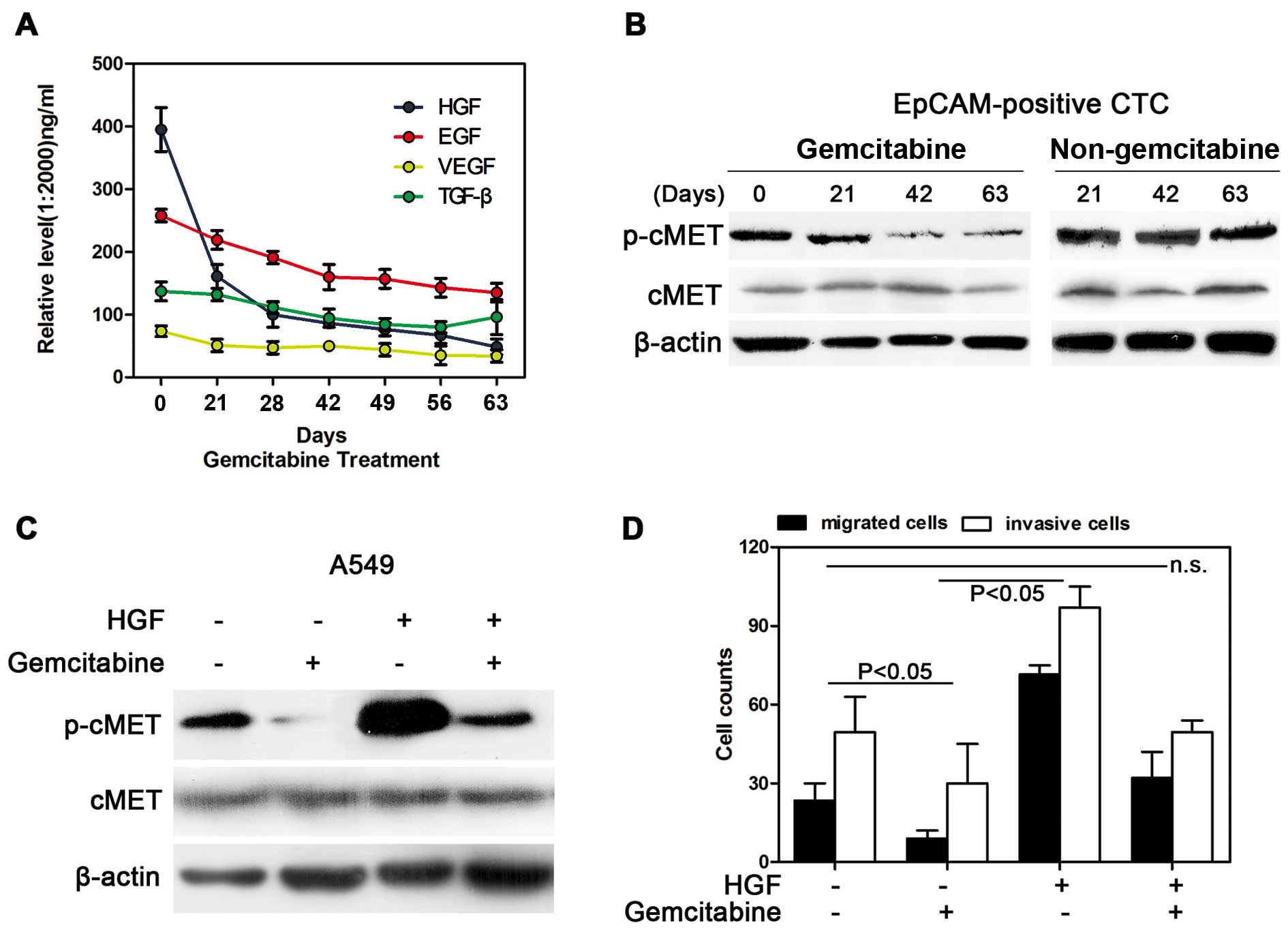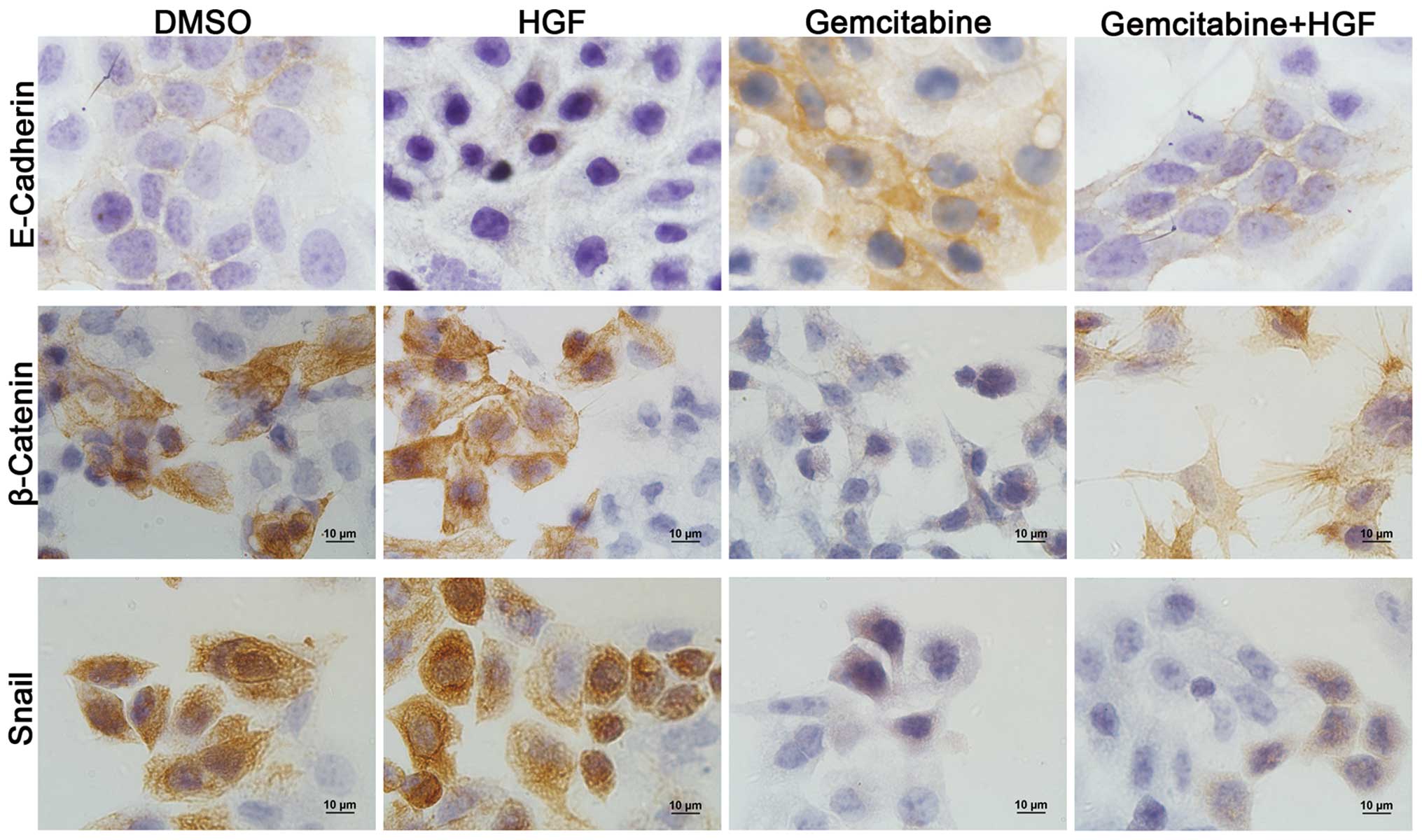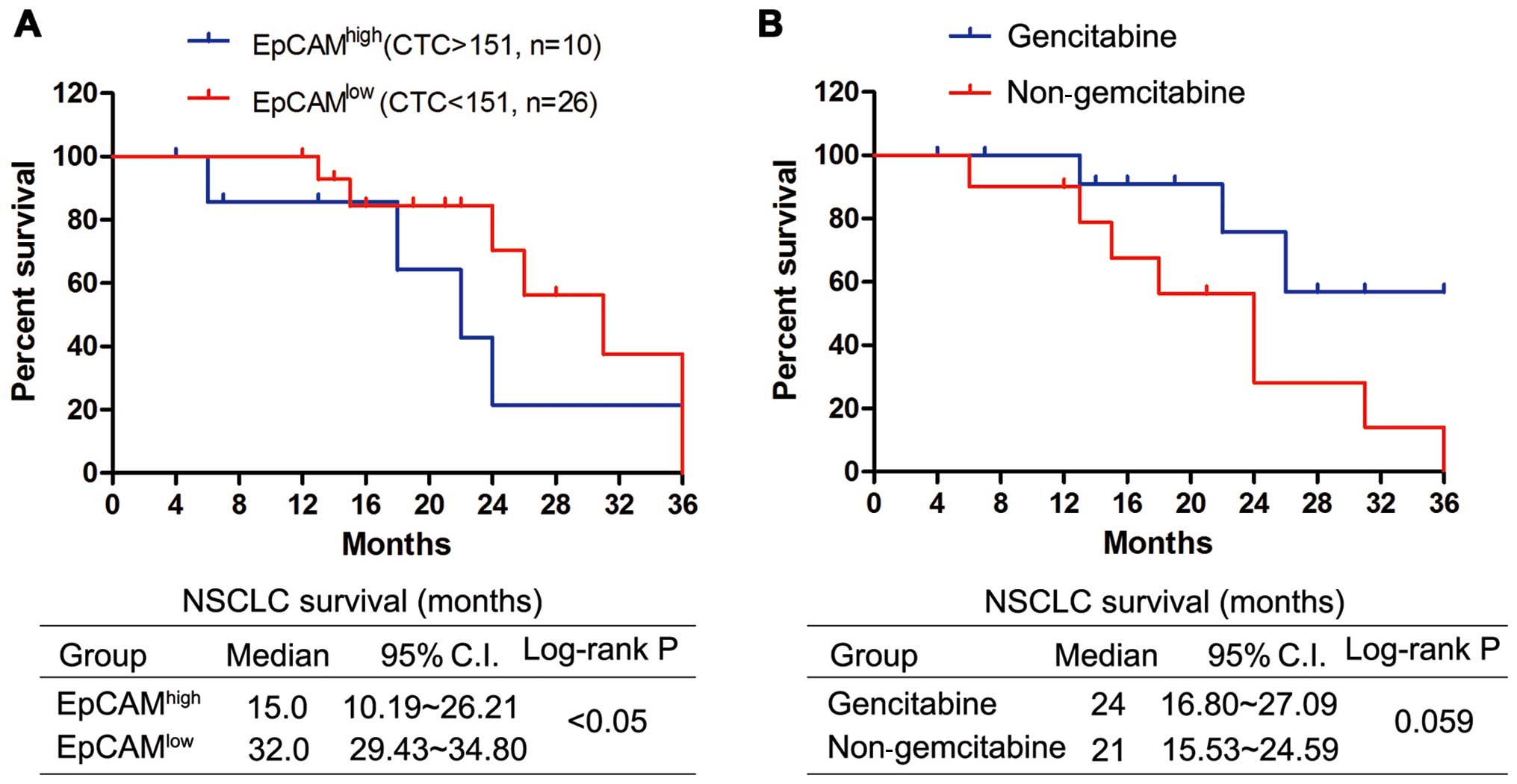|
1
|
Ferlay J, Shin HR, Bray F, Forman D,
Mathers C and Parkin DM: Estimates of worldwide burden of cancer in
2008: GLOBOCAN 2008. Int J Cancer. 127:2893–2917. 2010. View Article : Google Scholar : PubMed/NCBI
|
|
2
|
Ni X, Zhuo M, Su Z, et al: Reproducible
copy number variation patterns among single circulating tumor cells
of lung cancer patients. Proc Natl Acad Sci USA. 110:21083–21088.
2013. View Article : Google Scholar
|
|
3
|
Plaks V, Koopman CD and Werb Z: Cancer.
Circulating tumor cells. Science. 341:1186–1188. 2013. View Article : Google Scholar : PubMed/NCBI
|
|
4
|
Li P, Stratton ZS, Dao M, Ritz J and Huang
TJ: Probing circulating tumor cells in microfluidics. Lab Chip.
13:602–609. 2013. View Article : Google Scholar
|
|
5
|
Young R, Pailler E, Billiot F, et al:
Circulating tumor cells in lung cancer. Acta Cytol. 56:655–660.
2012. View Article : Google Scholar : PubMed/NCBI
|
|
6
|
Liu Y, Qian J, Feng JG, et al: Detection
of circulating tumor cells in peripheral blood of colorectal cancer
patients without distant organ metastases. Cell Oncol (Dordr).
36:43–53. 2013. View Article : Google Scholar : PubMed/NCBI
|
|
7
|
Hou HW, Warkiani ME, Khoo BL, et al:
Isolation and retrieval of circulating tumor cells using
centrifugal forces. Sci Rep. 3:12592013.PubMed/NCBI
|
|
8
|
Huang SB, Wu MH, Lin YH, et al:
High-purity and label-free isolation of circulating tumor cells
(CTCs) in a microfluidic platform by using
optically-induced-dielectrophoretic (ODEP) force. Lab Chip.
13:1371–1383. 2013. View Article : Google Scholar : PubMed/NCBI
|
|
9
|
Diamond E, Lee GY, Akhtar NH, et al:
Isolation and characterization of circulating tumor cells in
prostate cancer. Front Oncol. 2:1312012. View Article : Google Scholar : PubMed/NCBI
|
|
10
|
Dong Y, Skelley AM, Merdek KD, et al:
Microfluidics and circulating tumor cells. J Mol Diagn. 15:149–157.
2013. View Article : Google Scholar : PubMed/NCBI
|
|
11
|
Green TL, Cruse JM and Lewis RE:
Circulating tumor cells (CTCs) from metastatic breast cancer
patients linked to decreased immune function and response to
treatment. Exp Mol Pathol. 95:174–179. 2013. View Article : Google Scholar : PubMed/NCBI
|
|
12
|
Lin HK, Zheng S, Williams AJ, et al:
Portable filter-based microdevice for detection and
characterization of circulating tumor cells. Clin Cancer Res.
16:5011–5018. 2010. View Article : Google Scholar : PubMed/NCBI
|
|
13
|
Alunni-Fabbroni M and Sandri MT:
Circulating tumour cells in clinical practice: Methods of detection
and possible characterization. Methods. 50:289–297. 2010.
View Article : Google Scholar : PubMed/NCBI
|
|
14
|
Ross JS and Slodkowska EA: Circulating and
disseminated tumor cells in the management of breast cancer. Am J
Clin Pathol. 132:237–245. 2009. View Article : Google Scholar : PubMed/NCBI
|
|
15
|
Amadori A, Rossi E, Zamarchi R, Carli P,
Pastorelli D and Jirillo A: Circulating and disseminated tumor
cells in the clinical management of breast cancer patients:
unanswered questions. Oncology. 76:375–386. 2009. View Article : Google Scholar : PubMed/NCBI
|
|
16
|
Wen CY, Wu LL, Zhang ZL, et al:
Quick-response magnetic nanospheres for rapid, efficient capture
and sensitive detection of circulating tumor cells. ACS Nano.
8:941–949. 2014. View Article : Google Scholar : PubMed/NCBI
|
|
17
|
Chen Q, Ge F, Cui W, et al: Lung cancer
circulating tumor cells isolated by the EpCAM-independent
enrichment strategy correlate with Cytokeratin 19-derived CYFRA21-1
and pathological staging. Clin Chim Acta. 419:57–61. 2013.
View Article : Google Scholar
|
|
18
|
Pantel K and Alix-Panabieres C:
Circulating tumour cells in cancer patients: challenges and
perspectives. Trends Mol Med. 16:398–406. 2010. View Article : Google Scholar : PubMed/NCBI
|
|
19
|
Sieuwerts AM, Kraan J, Bolt J, et al:
Anti-epithelial cell adhesion molecule antibodies and the detection
of circulating normal-like breast tumor cells. J Natl Cancer Inst.
101:61–66. 2009. View Article : Google Scholar : PubMed/NCBI
|
|
20
|
Fidler IJ: The pathogenesis of cancer
metastasis: the ‘seed and soil’ hypothesis revisited. Nat Rev
Cancer. 3:453–458. 2003.
|
|
21
|
Thiery JP, Acloque H, Huang RY and Nieto
MA: Epithelial-mesenchymal transitions in development and disease.
Cell. 139:871–890. 2009. View Article : Google Scholar : PubMed/NCBI
|
|
22
|
Hugo H, Ackland ML, Blick T, et al:
Epithelial-mesenchymal and mesenchymal-epithelial transitions in
carcinoma progression. J Cell Physiol. 213:374–383. 2007.
View Article : Google Scholar : PubMed/NCBI
|
|
23
|
Chaffer CL, Thompson EW and Williams ED:
Mesenchymal to epithelial transition in development and disease.
Cells Tissues Organs. 185:7–19. 2007. View Article : Google Scholar : PubMed/NCBI
|
|
24
|
Vincan E and Barker N: The upstream
components of the Wnt signalling pathway in the dynamic EMT and MET
associated with colorectal cancer progression. Clin Exp Metastasis.
25:657–663. 2008. View Article : Google Scholar : PubMed/NCBI
|
|
25
|
Zavadil J: New TGF-beta and Ras crosstalk
in EMT. Cell Cycle. 8:1842009. View Article : Google Scholar : PubMed/NCBI
|
|
26
|
Thiery JP: Epithelial-mesenchymal
transitions in development and pathologies. Curr Opin Cell Biol.
15:740–746. 2003. View Article : Google Scholar : PubMed/NCBI
|
|
27
|
Polakis P: The many ways of Wnt in cancer.
Curr Opin Genet Dev. 17:45–51. 2007. View Article : Google Scholar : PubMed/NCBI
|
|
28
|
Akhurst RJ, Fitzpatrick DR, Fowlis DJ,
Gatherer D, Millan FA and Slager H: The role of TGF-beta s in
mammalian development and neoplasia. Mol Reprod Dev. 32:127–135.
1992. View Article : Google Scholar : PubMed/NCBI
|
|
29
|
Zhou HY, Pon YL and Wong AS: HGF/MET
signaling in ovarian cancer. Curr Mol Med. 8:469–480. 2008.
View Article : Google Scholar : PubMed/NCBI
|
|
30
|
Gesto DS, Cerqueira NM, Fernandes PA and
Ramos MJ: Gemcitabine: a critical nucleoside for cancer therapy.
Curr Med Chem. 19:1076–1087. 2012. View Article : Google Scholar : PubMed/NCBI
|
|
31
|
Muggia F, Diaz I and Peters GJ: Nucleoside
and nucleobase analogs in cancer treatment: not only sapacitabine,
but also gemcitabine. Expert Opin Investig Drugs. 21:403–408. 2012.
View Article : Google Scholar : PubMed/NCBI
|
|
32
|
Cok G, Goksel T, Soyer S and Aysan T:
Effectiveness of gemcitabine as second-line chemotherapy in
non-small cell lung cancer. Tuberk Toraks. 56:74–80.
2008.PubMed/NCBI
|
|
33
|
Noble S and Goa KL: Gemcitabine. A review
of its pharmacology and clinical potential in non-small cell lung
cancer and pancreatic cancer. Drugs. 54:447–472. 1997.PubMed/NCBI
|
|
34
|
Galsky MD, Hahn NM, Powles T, et al:
Gemcitabine, Cisplatin, and sunitinib for metastatic urothelial
carcinoma and as preoperative therapy for muscle-invasive bladder
cancer. Clin Genitourin Cancer. 11:175–181. 2013. View Article : Google Scholar : PubMed/NCBI
|
|
35
|
Martin M, Ruiz A, Munoz M, et al:
Gemcitabine plus vinorelbine versus vinorelbine monotherapy in
patients with metastatic breast cancer previously treated with
anthracyclines and taxanes: final results of the phase III Spanish
Breast Cancer Research Group (GEICAM) trial. Lancet Oncol.
8:219–225. 2007. View Article : Google Scholar
|
|
36
|
Reaume MN, Leighl NB, Mittmann N, et al:
Economic analysis of a randomized phase III trial of gemcitabine
plus vinorelbine compared with cisplatin plus vinorelbine or
cisplatin plus gemcitabine for advanced non-small-cell lung cancer
(Italian GEMVIN3/NCIC CTG BR14 trial). Lung Cancer. 82:115–120.
2013. View Article : Google Scholar : PubMed/NCBI
|
|
37
|
Gridelli C, Gallo C, Shepherd FA, et al:
Gemcitabine plus vinorelbine compared with cisplatin plus
vinorelbine or cisplatin plus gemcitabine for advanced
non-small-cell lung cancer: a phase III trial of the Italian GEMVIN
Investigators and the National Cancer Institute of Canada Clinical
Trials Group. J Clin Oncol. 21:3025–3034. 2003.
|
|
38
|
Perlikos F, Harrington KJ and Syrigos KN:
Key molecular mechanisms in lung cancer invasion and metastasis: a
comprehensive review. Crit Rev Oncol Hematol. 87:1–11. 2013.
View Article : Google Scholar : PubMed/NCBI
|
|
39
|
Stott SL, Lee RJ, Nagrath S, et al:
Isolation and characterization of circulating tumor cells from
patients with localized and metastatic prostate cancer. Sci Transl
Med. 2:25ra232010.PubMed/NCBI
|
|
40
|
Wallwiener M, Hartkopf AD, Baccelli I, et
al: The prognostic impact of circulating tumor cells in subtypes of
metastatic breast cancer. Breast Cancer Res Treat. 137:503–510.
2013. View Article : Google Scholar : PubMed/NCBI
|
|
41
|
Ma J, Lin JY, Alloo A, et al: Isolation of
tumorigenic circulating melanoma cells. Biochem Biophys Res Commun.
402:711–717. 2010. View Article : Google Scholar : PubMed/NCBI
|



